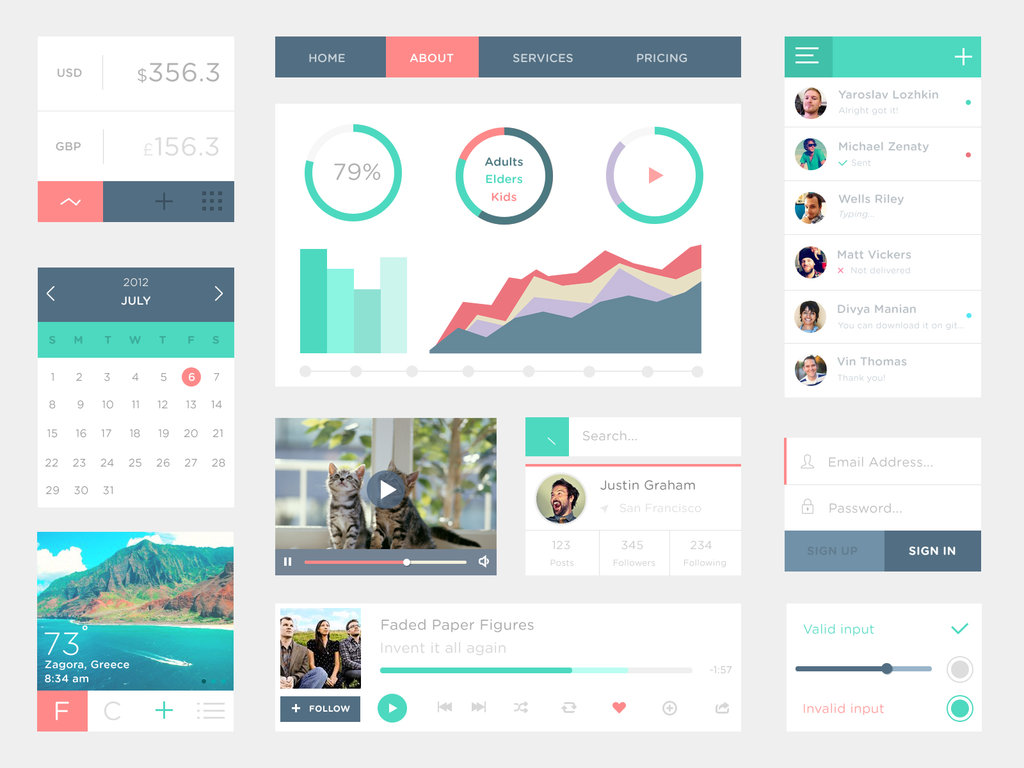Overview
Timo Arnall’s “No to NoUI” (http://www.elasticspace.com/2013/03/no-to-no-ui) has caused quite a stir within the design community. While I enjoyed reading this article, I do take issue with some of the authors arguments. Specifically Timo Arnall doesn’t try to suss out a definition of Invisible Design, and he issues blanket statements about the inherent “dishonesty” of so-called Invisible Design. While I don’t disagree with what I believe to be the overarching message within Arnall’s essay, that design should be “legible, readable, understandable, and foreground culture over technology”, I do take point with particular arguments he presents to get towards that goal.
Invisible doesn’t mean non-existent
First, it seems that when a lot of people talk about “invisible” interfaces, they are talking about interfaces that are not exactly invisible, but are more wholly integrated with our “natural” environment. Siri for instance is often talked about being “invisible”, but the technology is far from it. Users must push a button to activate Siri, and then the technology speaks back to the user. While spoken interface is “invisible” in that it doesn’t utilize the visible spectrum, it’s hardly an “invisible” interface when the technology is speaking back directly to the person who queried it. Further, technologies like Siri often employ a highly visible UI to encourage choice and help users inform the technology about their intentions.
Invisible vs Background-ed
From: http://www.theverge.com/2013/3/10/4086392/samsung-golden-krishna-the-best-interface-is-no-interface
“You don’t have to use the interface anymore — it becomes part of the background,” – Golden Krishna
The author (Arnall) talks about interfaces becoming invisible and argues that “Without highly legible systems for managing and understanding all of this ‘smartness’ we are going to get very lost and highly frustrated”. He uses the example of the Nest thermostat that learns users preferred temperature patterns over time. The author states that it’s very important that Nest has a UI so that users can understand what it’s doing and understand the complexity behind the system. However, I would argue that people don’t want to fully understand the complexity of Nest. People want things that just work for them, and once Nest learns their habits and conforms to them, people forget about the complexity and UI all together, essentially making the Nest invisible. The same is true for common thermostats in that they are just part of the background and invisible until they are needed. This is the kind of invisibility that designers are clamoring for today, and something people (read: users) desire as well; technology that works and ways to understand when it doesn’t.
Invisible design ignores interface culture
Arnall says “Interfaces are the dominant cultural form of our time. So much of contemporary culture takes place through interfaces and inside UI. Interfaces are part of cultural expression and participation, skeuomorphism is evidence that interfaces are more than chrome around content, and more than tools to solve problems.” This is completely on point and a very good argument. The author talks about how interface is a form of culture making, much like typography or photography in earlier years (and still today). As our world moves towards more and more digital technology, interfaces become an important understanding of who we are as a people. However, the author fails to discuss how “invisible” (see how I keep putting that in quotes?) design can influence culture as well. Looking back at Siri, culture steams from “her” stylized and highly personable voice. Further, Siri can has been labeled by some as “snarky” or “apologetic”. Her voice carries culture from past “assistants” in television and movies and brings with it a culture in and of itself. Just because an interface isn’t physically visible, doesn’t make the interface invisible and certainly doesn’t mean the interface lacks or doesn’t create culture.
Evident interaction
The author states that a designer’s goal should be to “place as much control as possible in the hands of the end-user by making interfaces evident”. I disagree. I don’t believe that many people in the world want complete control of all interfaces. I believe that people want control when it’s appropriate, and they only want appropriate control. I don’t need the interface of an automatic sink to be controllable, I just want it to work through the magic of sensing; except when it fails. This is nuanced and full of details for each and every interaction that takes place for an interface, and should be carefully considered by all who design.
Further, the author states that “We must abandon invisibility as a goal for interfaces; it’s misleading, unhelpful and ultimately dishonest”. This is a large blanket statement that fails to take into account situations in which invisibility might be exactly what’s needed for a situation. The real goal of designers should be to carefully consider when invisibility is useful and not blindly follow the newest shouting from the design masses.
Towards a better definition of Invisible Design
Designers don’t fully intend for everything to disappear and be fully automatic and autonomous. Instead they intend for designs to be background-ed to content, experience, and intentions. People don’t need to understand every decision a system might make for them at all times, but they do need a way to get to that information easily and without frustration. Designer’s intentions are not to foreground design itself, but to enhance the lives of people through thoughtful crafting of things. Good design should therefore be invisible when it’s not needed, and become more and more visible when called upon. Therein we have a fuller understanding and definition of invisible design as design that lives in the background of human experiences and comes to the foreground with thoughtful craft and understanding of people’s needs, desires, and intentions.
Design should always remain subservient to people’s needs and desires, Invisible Design helps to direct and maintain the proper hierarchy of the relationship between people and things while making our lives better and freeing our precious minds from a thousand more decisions we don’t need to make.
Open Discussion
As designers, it’s important that we continue to talk about over-arching concepts and design theory, my opinion isn’t the only one, might not be coherent, and could certainly be wrong. Let’s discuss like adults.
Feature image by Zizaza: http://darkstalkerr.deviantart.com/art/Free-PSD-UI-Kit-420378687



